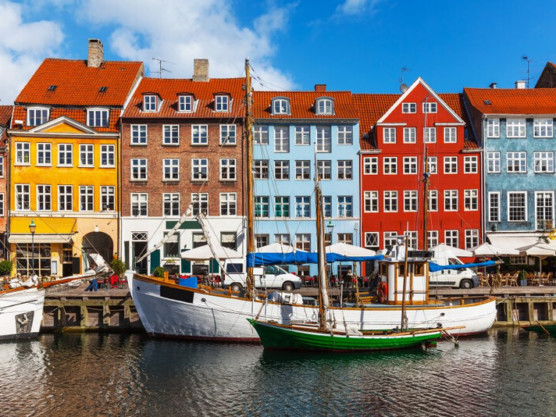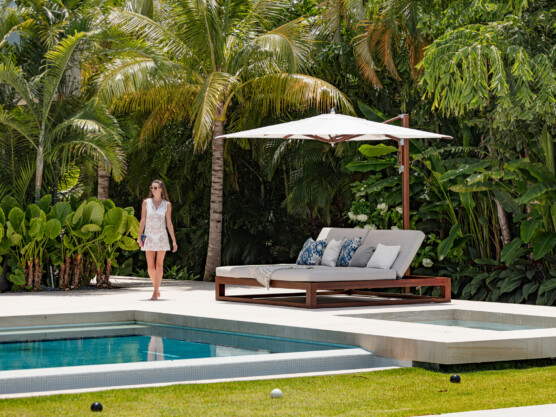A Look at Teak Throughout the Years
Throughout the Middle Ages white squalls thundered over the hulls of ships. The soaked decks that weathered the storms were usually built with resilient teak wood. Native to Southeast Asia, teak remained a desired construction material since its initial use in the fifth century. This tropical hardwood was first harvested by innovative shipbuilders. They discovered that teak’s high oil content and tight grain held up to harsh marine elements. Easily enduring long-term submersion in water.
In the 20th century, Britain sought to maintain its maritime power. As a result, they conquered parts of India and Burma in order to claim expansive teak forests for shipbuilding materials. Teak wood began to be recognized for more than its durability and water resistance. Even after being processed, teak maintains its weather-resistant properties of oil and rubber. These properties naturally protect the wood from water, wear, and tear. Therefore, builders and designers began incorporating teak into all aspects of interior and exterior design. Teak had proven its longevity and was in high demand. Uses ranged from floorboards, to indoor and outdoor furniture, intricate carvings, frames, and more.
Similarly, Scandinavian designers, known for their emphasis on minimalism and raw materials, had a unique appreciation for teak’s tight and dense grain. They incorporated this hardwood into all aspects of their handcrafted pieces. Teak was framed into interior walls of homes, built as standalone furniture, even placed as trim on the exterior of structures. However, teak never made it into a wooden patio parasol!

Classic Material, Modernized
Furniture made from teak wood not only retains its beauty over time, but also its durability. Teak is both dense and strong. These qualities protect the wood from the inside out – preventing dry rot and warping and protecting against fungi, mildew, and parasites such as termites. This long-term versatility makes teak an ideal option for patio furniture, complimenting the environment. Each piece made from this long-lasting hardwood will weather the years, and host many shared moments.
Teak parasols are a constant top choice for eco-friendly businesses eager to support sustainability. Sleek, minimalist designs add a pop of sophistication in a lush outdoor setting. Tuuci®’s teak patio parasol complements natural scenery by using this naturally luxurious hardwood. Above all, designers can feel confident in their selection if they spec products sourced by both, an undeniable leader in quality, and one focused on environmental responsibility.

Environmental Impact and Sustainability
Teak wood is a gift from nature and should be respected as such. Environmentally responsible companies sourcing teak set the standard for ethical furniture design. Thus, sourcing teak wood from plantations that maintain high standards of certification for sustainable forestry is essential.
Responsibly harvested teak allows outdoor and indoor furniture to be both mindful and stylish statement pieces. Pairing teak with delicate silk prints, tassels, ceramics, and rich jewel tones can create a southeastern Asian vibe for your own personal Zen garden. Or, bring the islands inside by pairing the furniture in a sun room decorated in floral prints, Hawaiian tiki statues, and year-round plumeria plants for your own oasis.

Teak Patio Parasols—Built to Last, Designed to Inspire
Inspired by the boat building industry through the years, the new Nautical Teak Hardwood Parasol Collection by Tuuci blends the beauty of teak hardwood with marine grade stainless steel materials to create an elegant new line of patio parasols. Each masterfully crafted teak parasol is paired with highly durable marine grade Tuuci high performance textile canopy fabric available in a wide range of vibrant colors. This exclusive line of parasols also features an updated pulley made of marine grade steel. Long-lasting teak wood and marine grade steel that can withstand harsh weather conditions are optimal materials for design. Both elegant and sturdy. Wood patio parasols are redefined!
This luxury collection complements the shade which nature already provides. As the international brand leading restaurants and luxury resorts, Tuuci offers top quality, top style wood patio parasols to enhance any outdoor setting. Be at one with nature in your own outdoor sanctuary. Interior designers seeking to elevate exterior spaces for their clients should look no further than the new Nautical Teak Hardwood Parasol Collection. This collection is not to be missed—contact a specialist today!



